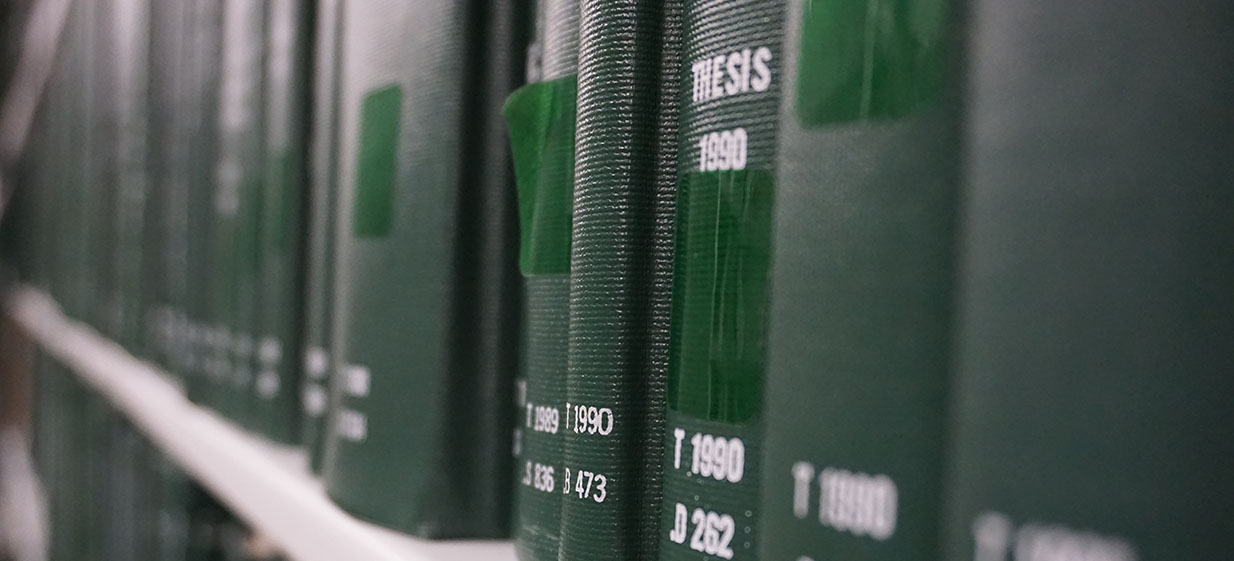
In 1923, department chair Philip Greeley Clapp established graduate studies in music at the University of Iowa, and in 1924/25, the first students concluded their course of study with the submission of musical compositions and documents as theses. Over the last 95 years, Iowa graduates have submitted musical works, performing and critical editions, historical and theoretical studies, arrangements and transcriptions, bibliographies, and most recently, audio recordings as thesis as the capstone project of their master’s or doctoral degree in music at the University of Iowa.
This exhibit invites you to explore the breadth and depth of Iowa music theses, both in substance and style. Objects on display will rotate periodically and will be organized around different themes, such as theses about music in Iowa and the UI School of Music, prize winning projects, compositions, recordings, and more.
Week One: Early Theses
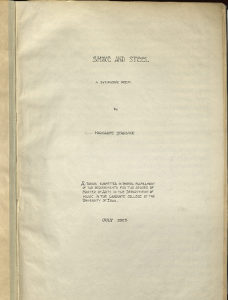
Two compositions were submitted for thesis in the summer of 1925; Pandora by Marian Edman and Smoke and Steel by Anna Margaret Starbuck. The latter was daughter of piano and organ professor, Anna Diller Starbuck, who figures prominently in the correspondence of music department chair, P. G. Clapp.
Clapp wrote in a letter to his wife, “Margaret Starbuck is finding, to her surprise and consternation, that finishing her score is a big job. She is keeping at it – now! – and will, I think, finish her work, especially as I have a notion (which naturally I am not publishing) that I can get her a time extension of about three days at the end, if necessary; but her parents are clearly worried, and are starting a prophylactic rumor that I could excuse her from finishing if I were decent and chose.”
In the end, Margaret completed the project on time and graduated as a Master of Music. Her composition, Smoke and Steel, was inspired by the Carl Sandburg poem of the same name.
Early theses compositions were handwritten manuscripts written in ink, so Margaret’s struggles to complete her project are understandable. A close look at her score reveals the underlying pencil marks, and in several places, she had to scrape away the paper to remove mistakes.
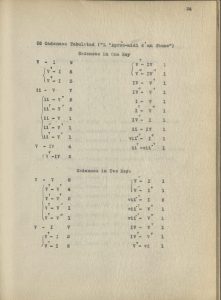
The first written music thesis analyzed Debussy’s Arabesque No. 2 and Prélude à l’après-midi d’un faune, charting the cadences with observance to their function and effect. Camp’s project may seem mundane, but consider that Debussy died only six years before the thesis was written and his music still relatively new (though the works studied were more than twenty years old).
The thesis shows the limitations of typewriters in handling musical needs, for Camp found it necessary to write in sharps, flats, and intervals. This may be why Camp included no musical examples in the thesis – only measure numbers. Subsequent thesis writers pasted or taped handwritten examples into their documents.
Following graduation, Camp moved to Arizona, where a census record lists her as a teacher at the state university. She married Cecil Clampitt in 1930 and died at the age of 87 in Tuscon.
Week Two: Award Winning Theses
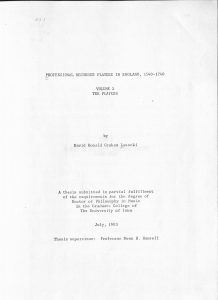
The D.C. Spriestersbach Dissertation Prize was established to recognize excellence in doctoral research. Each year, a winner of the D.C. Spriestersbach Dissertation Prize is eligible to become the University of Iowa’s nominee in the national competition for the Council of Graduate Schools/University Microfilms International Distinguished Dissertation Award. In 1984, David Lasocki became the first of five Hawkeyes to receive the Spriesterbach and the International Distinguished Dissertation Award.
Lasocki went on to publish numerous performing editions of flute and recorder repertoire. His book, The Recorder: a research and information guide, is in its third edition. He also co-published several performance guides with Iowa’s emeritus flute professor Betty Bang Mather.
Lasocki worked as a reference librarian at the William and Gayle Cook Music Library at Indiana University, Bloomington for many years. In retirement, he still researches and writes about historical performance and the recorder.
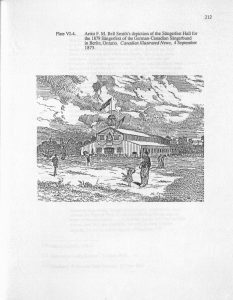
Männerchors, or male singing societies, were active in the United States from the mid-nineteenth century, though most folded following the world wars. While several studies had examined specific männerchor or focused on a defined region, Snyder’s thesis endeavored to “explore the Männerchor from both the local and regional view, and much attention…given to the Sängerfests of regional federations…These festivals significantly influenced the musical climate of the times, and let to the establishment of music festivals across the United States, many of which are in still in existence today.”
In her acknowledgements, Snyder credits UI musicologist Dr. Fred Crane for “interesting me in a topic that has been fascinating and immensely rewarding.” Crane’s personal collection of musical Iowana informed sections of Snyder’s study [see medallion left].
Snyder’s dissertation received the Rita Benton Dissertation Award. She continued writing about männerchor, including a chapter about sängerfests in Indianapolis for the book Music and culture in America, 1861-1918 (Garland, 1998).
Week Three: University of Iowa School of Music Histories
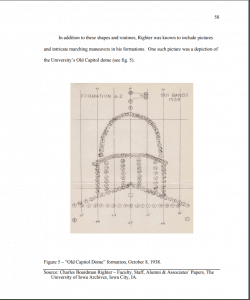
As the author of this thesis notes, “The Hawkeye Marching Band is the most visible ensemble in the School of Music, and it is one of the largest student groups at the University…” In fact, marching bands at the University pre-date the formation of the School of Music, having started in 1881 with the University Battalion Band (six cornets, two alto horns, two tenor horns, one baritone, two basses, tenor and bass drums, and cymbals), and was part of the Military Department.
Biggers’s study is a rich mix of oral and documented history. University yearbooks, other historical studies on musical activities at Iowa, departmental records, local newspapers (including The Daily Iowan), photographs, drill charts, and business papers all served to inform this document.
The appendices are also of note, because Biggers collated lists of drum majors, student leaders, work crews, librarians, twirlers, band announcers, recordings, trophy recipients, and staff.